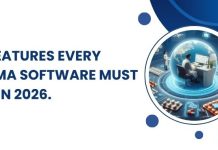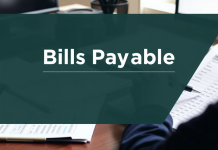Understanding bills receivable is significant for all businesses realizing that they frequently incur credit transactions, in which payment is made after a certain time. This makes it always have an element of bills receivable, which are crucial to financial statements. It is, therefore, necessary to understand how these appear in the trial balance and how they are treated in final accounts for accurate financial reporting. This blog will help you understand the significance of bills receivable, their accounting treatment, and how they affect financial statements.
What Are Bills Receivable?
Bills receivable are written promises of customers to pay specific amounts at specific future dates. They arise from the sale of goods or services on credit, from which the business obtains a legally binding document (bill of exchange) from its debtor.
For example: If a business sells goods for ₹50,000 on credit, with an agreement that the customer will pay after 60 days, then a bill receivable is created against ₹50,000.
Bills Receivable in Trial Balance
A trial balance is a statement listing all ledger balances to verify that total debits equal total credits. In the trial balance, bills receivable will appear as assets.
Treatment of Bills Receivable in Trial Balance:
- It is under debit side because it indicates money owing to the business.
- It is classified under current assets as it is expected to be realizable within one year.
- It helps in evaluating the liquidity position of the business.
Example of Bills Receivable in Trial Balance:
| Account Name | Debit (₹) | Credit (₹) |
| Cash A/c | 20,000 | |
| Bills Receivable A/c | 50,000 | |
| Sales A/c | 1,00,000 | |
| Purchases A/c | 80,000 |
In this example, bills receivable of ₹50,000 are recorded as an asset in the trial balance.
Bills Receivable in Final Accounts
Final accounts include the Trading and Profit & Loss Account and the Balance Sheet. Bills receivable are not directly recorded in the Trading or Profit & Loss Account but appear in the Balance Sheet.
Treatment of Bills Receivable in Final Accounts:
- It is shown under the Current Assets section of the Balance Sheet.
- If the bill is dishonored (not paid by the debtor), it is transferred back to the debtor’s account.
Bills Receivable in the Balance Sheet
| Liabilities | Amount (₹) | Assets | Amount (₹) |
| Capital | 2,00,000 | Cash in Hand | 20,000 |
| Creditors | 50,000 | Debtors | 30,000 |
| Bills Receivable | 50,000 | ||
| Closing Stock | 1,50,000 |
Here, bills receivable of ₹50,000 are shown under current assets.
Journal Entries for Bills Receivable
When a Bill is Received from a Debtor:
Journal Entry:
Bills Receivable A/c Dr. ₹50,000
To Debtor A/c ₹50,000
(Being bill received from the debtor)
When the Bill is Honored by the Debtor:
Journal Entry:
Bank A/c Dr. ₹50,000
To Bills Receivable A/c ₹50,000
(Being bill honored by the debtor)
When the Bill is Dishonored (Not Paid by the Debtor):
Journal Entry:
Debtor A/c Dr. ₹50,000
To Bills Receivable A/c ₹50,000
(Being bill dishonored and transferred back to debtor’s account)
Impact of Bills Receivable on Business Financials
Liquidity Management:
Bills receivable provide businesses with a clear expectation of future cash inflows, helping in cash flow planning.
Risk Management:
Businesses must monitor outstanding bills to avoid bad debts from dishonored bills.
Financial Position Representation:
Recording bills receivable accurately ensures that financial statements reflect the true financial position of the business.
Difference Between Bills Receivable and Bills Payable
| Basis | Bills Receivable | Bills Payable |
| Meaning | Amount due from customers | Amount due to suppliers |
| Nature | Asset (Current) | Liability (Current) |
| Recorded in | Debit side of Trial Balance | Credit side of Trial Balance |
| Balance Sheet Treatment | Shown under Current Assets | Shown under Current Liabilities |
Marg ERP: Simplifying Bills Receivable Management
Bills receivable arrangements made by hand consume a lot of time and have enormous scope for error. Marg ERP has a full accounting solution that one could use to automate and smooth out such a process.
Features of Marg ERP:
✅ Automated Billing & Invoicing – Recording and tracking bills receivable gets effortless.
✅ Real-Time Reporting – Know about the status of outstanding payments as well as cash flow.
✅ Seamless Integration – GST, banking, and inventory management.
✅ Alerts & Reminders – Forgetting the due dates will be history with these automated reminders for payments.
✅ Multi-User Access – Facilitate teamwork for stronger financial control.
Marg ERP helps businesses curb their financial risks and makes their collection more efficient while also making their economy grow.
Conclusion
Bills receivable constitute an integral part of business accounting as it presents the methodology for dealing with credit transactions in business. It forms an asset on the trial balance, for the final accounts, it is only shown in the Balance Sheet under current assets. Adequate management of bills-receivable increases cash flow, minimizing financial risk and promoting stability in the business.
Recording, tracking, and managing bills receivable rightly translate to accurate financial records and proper decision-making regarding financial issues. Adequate documentation should always be available for every payment and follow-up of payments so that one does not face financial drawbacks.
Would you like a completely automated system for managing all your bills receivable? Visit Marg ERP to learn all about their accounting solutions and easily streamline your finances!
Read More:
- NDPS Act 1985: Why Every Modern Pharmacy Needs Advanced Pharmacy Billing Software
- Understanding DPCO 2013: A Complete Guide for Pharmacies and How Pharmacy Software Ensures Compliance
- Top 7 Garment Industry Challenges & How Billing Software Solves Them
- 10 Must-Have Features in Modern Garment Billing Software for 2026.
- How Marg Digital Healthcare Helps Chemists Earn More and Serve Better.




















